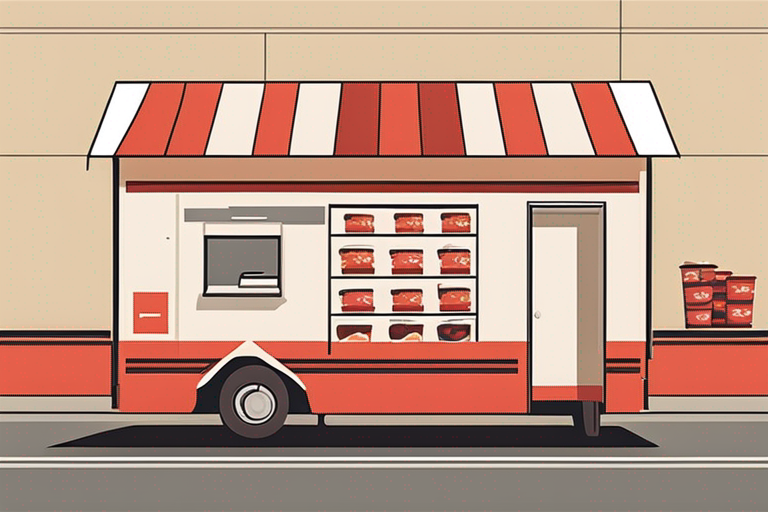
Ensuring Food Safety in Postal Food Drives
Get Your Free Food Safety Cheat Sheet
30 most common foods with instant answers. Print it and stick it on your fridge—completely free!
Ensuring Food Safety in Postal Food Drives
Postal food drives play a crucial role in helping address food insecurity in communities. These drives provide an opportunity for individuals to donate non-perishable food items to those in need. While participating in a postal food drive is a generous act, it is essential to ensure that all donated food items are safe for consumption. In this blog post, we will discuss practical tips and safety information to help you ensure food safety in postal food drives.
Why Food Safety is Important in Postal Food Drives
Food safety is a critical aspect of any food donation drive, including postal food drives. Ensuring that donated food items are safe for consumption helps prevent foodborne illnesses and ensures that the recipients receive nutritious and wholesome food. By following proper food safety practices, we can help make a positive impact on the health and well-being of those who rely on food donations.
Risks of Unsafe Food Donations
- Contamination: Donated food items can become contaminated during handling, storage, or transportation, leading to foodborne illnesses.
- Spoilage: Improperly stored or expired food items may spoil and become unsafe for consumption.
- Allergen Cross-Contamination: Failure to label allergens in donated food items can lead to allergic reactions in recipients.
Tips for Ensuring Food Safety in Postal Food Drives
1. Choose Appropriate Food Items
- Select non-perishable food items that are in good condition and have not expired.
- Opt for canned goods, pasta, rice, dried beans, and other shelf-stable items that are less prone to spoilage.
2. Check for Damaged Packaging
- Inspect all donated food items for signs of damage, such as dents, leaks, or bulging cans.
- Avoid donating items with broken seals or compromised packaging.
3. Label Allergens Clearly
- If donating homemade goods or items with common allergens (e.g., nuts, dairy), clearly label them to prevent allergic reactions in recipients.
- Include a list of ingredients to help recipients identify any potential allergens.
4. Practice Proper Hygiene
- Wash your hands thoroughly before handling food items for donation.
- Use clean and sanitized containers or bags to pack the donated food items.
5. Store Food Items Properly
- Store donated food items in a cool, dry place to prevent spoilage.
- Avoid storing food items near cleaning supplies, chemicals, or other potentially hazardous materials.
Safety Information for Postal Food Drives
1. Temperature Control
- Avoid donating frozen or refrigerated items that may thaw or spoil during transit.
- Pack food items in insulated containers if shipping during hot weather to maintain their quality.
2. Transportation Guidelines
- Use sturdy boxes or containers to pack the donated food items securely.
- Avoid packing heavy items on top of fragile or crushable items to prevent damage.
3. Communication with Recipients
- Provide recipients with information on how to store and handle the donated food items safely.
- Include any special instructions or expiration dates for perishable items.
Conclusion
In conclusion, ensuring food safety in postal food drives is essential to protect the health of recipients and prevent foodborne illnesses. By following the tips and safety information outlined in this blog post, you can contribute to making a positive impact through your food donations. Remember that every small effort towards food safety goes a long way in helping those in need. Thank you for your commitment to food safety in postal food drives.

Authoritative Food Safety References
These agencies and university labs inform every tip and health precaution we publish.
USDA FoodKeeper – Cold Storage Guidelines
Official refrigerator, freezer, and pantry timelines maintained by the U.S. Department of Agriculture.
Visit USDA FoodKeeperFDA Produce Safety Rule & Grower Guidance
Field-to-fridge handling practices that prevent contamination of fruits, vegetables, and leafy greens.
Visit FDA Produce SafetyCDC Foodborne Illness Prevention Hub
Surveillance-backed guidance on pathogens, symptoms, and steps to reduce foodborne illness risk.
Visit CDC Food SafetyUC Davis Postharvest Technology Center
University research detailing optimal storage atmospheres for produce after harvest.
Visit UC Davis PostharvestPenn State Extension – Home Food Preservation & Safety
Peer-reviewed extension bulletins on safe canning, chilling, and reheating practices.
Visit Penn State ExtensionAre there specific food items that are best for postal food drives?
How should I package my donated food items for a postal food drive?
Can I donate homemade food items to a postal food drive?
How can I find a reputable postal food drive to donate to?
Get Your Free Food Safety Cheat Sheet
30 most common foods with instant answers. Print it and stick it on your fridge—completely free! Want more? Upgrade to the complete guide with 70+ foods.
Scan your food directly and get instant safety info using our AI-powered camera feature.